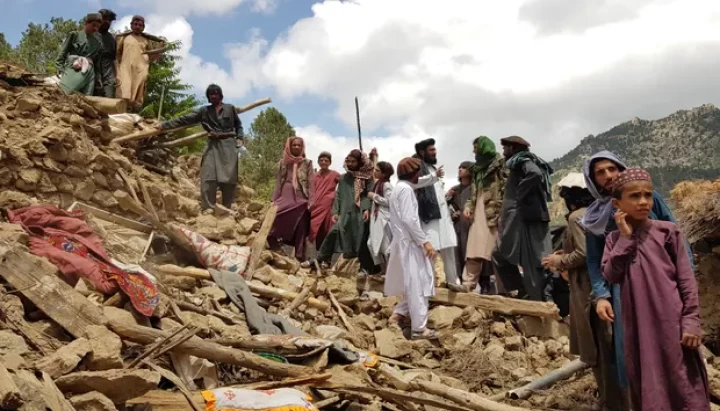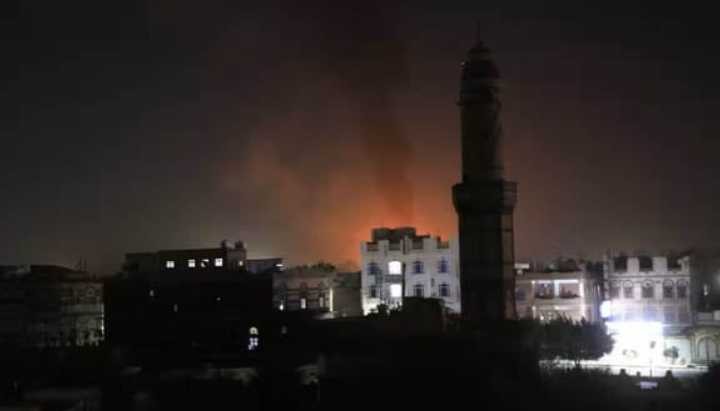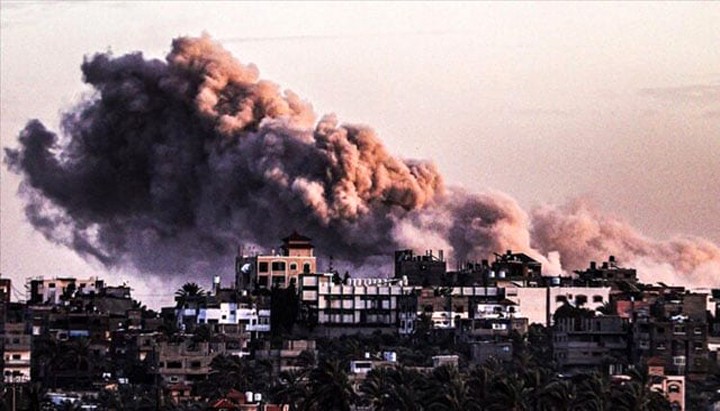Afghanistan’s Taliban-led government has appealed for more
international aid as it struggles to cope with the devastating earthquake in a
mountainous eastern region that has left more than 1,000 people dead and many
more injured.
With the war-ravaged nation already stricken by an economic
crisis, the hardline Islamist leadership said sanctions imposed by western
countries after the withdrawal of US-led coalition forces last year meant it
was handicapped in its ability to deal with Wednesday’s disaster in Khost and
Paktika provinces.
The death toll climbed steadily Wednesday as news of
casualties filtered in from hard-to-reach areas in the mountains, and the
country’s supreme leader, Hibatullah Akhundzada, warned it would probably rise
further.
The earthquake struck areas that were already suffering the
effects of heavy rain, causing rockfalls and mudslides that hampered rescue
efforts.
Describing the aftermath as people dug through the rubble to
retrieve the dead and injured, Mohammad Amin Huzaifa, the head of the
information and culture department in Paktika, said: “People are digging grave
after grave.”
Footage released by the Taliban showed residents digging a
long slit trench to bury the dead. Huzaifa said more than 1,500 people were
injured, many critically. “People are still trapped under the rubble,” he told
journalists.
The disaster comes as Afghanistan grapples with a severe
economic crisis that has gripped it since the Taliban takeover last year, and
amid rapidly mounting concerns over the ability of the Taliban and
international agencies to respond quickly.
While major international agencies still operate in
Afghanistan, the Taliban takeover saw other agencies and governments reduce
their assistance programmes in a country where about 80% of the budget came
from foreign assistance.
Abdul Qahar Balkhi, a senior Taliban official, said the
government “appreciated and welcomed” help that has been pledged by some other
governments and relief agencies such as Médecins Sans Frontières and the Red
Cross.
But the 5.9-magnitude earthquake – initially reported as
magnitude 6.1, and the country’s deadliest for more than 20 years – had caused
such widespread damage and suffering that more help was needed.
“The government sadly is under sanctions so it is financially
unable to assist the people to the extent that is needed,” he said.
“The assistance needs to be scaled up to a very large extent
because this is a devastating earthquake which hasn’t been experienced in
decades.”
The United Nations secretary-general, António Guterres, said
the global agency has “fully mobilised” to help, with UN officials confirming
the deployment of health teams and supplies of medicine, food, trauma kits and
emergency shelter to the quake zone.
Tomas Niklasson, the European Union’s special envoy for
Afghanistan, tweeted: “The EU is monitoring the situation and stands ready to
coordinate and provide EU emergency assistance to people and communities
affected.”
Pakistan, where officials said one person was killed in the
quake, said it would send emergency aid – including tents – across the border.
The disaster poses a huge challenge for the Taliban, who
have largely isolated the country as a result of their hardline Islamist
policies – particularly the subjugation of women and girls.
Even before the Taliban takeover, Afghanistan’s emergency
response teams were stretched to deal with the natural disasters that
frequently strike the country.
But with only a handful of airworthy planes and helicopters
left since the Taliban returned to power, any immediate response to the latest
catastrophe is further limited.
Karim Nyazai was in the provincial capital and returned
immediately to find his village devastated and 22 members of his extended
family dead.
“I was away from my family who live in a remote village in
the Gyan district. I went there as soon as I could find a car in the early
morning,” he told the Guardian.
“The entire village is buried. Those who could manage to get
out before everything fell down were managing to take out the bodies of their
loved ones out of the rubble. There were bodies wrapped in blankets everywhere.
“I lost 22 members of my [extended family] including my
sister, and three of my brothers. More than 70 people in the village died.”
One survivor, Arup Khan, 22, who was pulled out of a
collapsed guesthouse, described the moment the earthquake struck. “It was a
horrible situation. There were cries everywhere. The children and my family
were under the mud.”
The United States, whose troops helped topple the initial
Taliban regime and remained in Afghanistan for two decades until Washington
pulled them out last year, was “deeply saddened” by the earthquake, the White
House said.
“President Biden is monitoring developments and has directed
USAID (US Agency for International Development) and other federal government
partners to assess US response options to help those most affected,” national
security adviser Jake Sullivan said in a statement.
Wednesday’s quake occurred at around 1.30am at a depth of
10km (six miles), about 47km south-west of Khost, according to the United
States Geological Survey.
It was felt as far away as Lahore in Pakistan, 480km from
the epicentre in Khost.
- The Guardian








